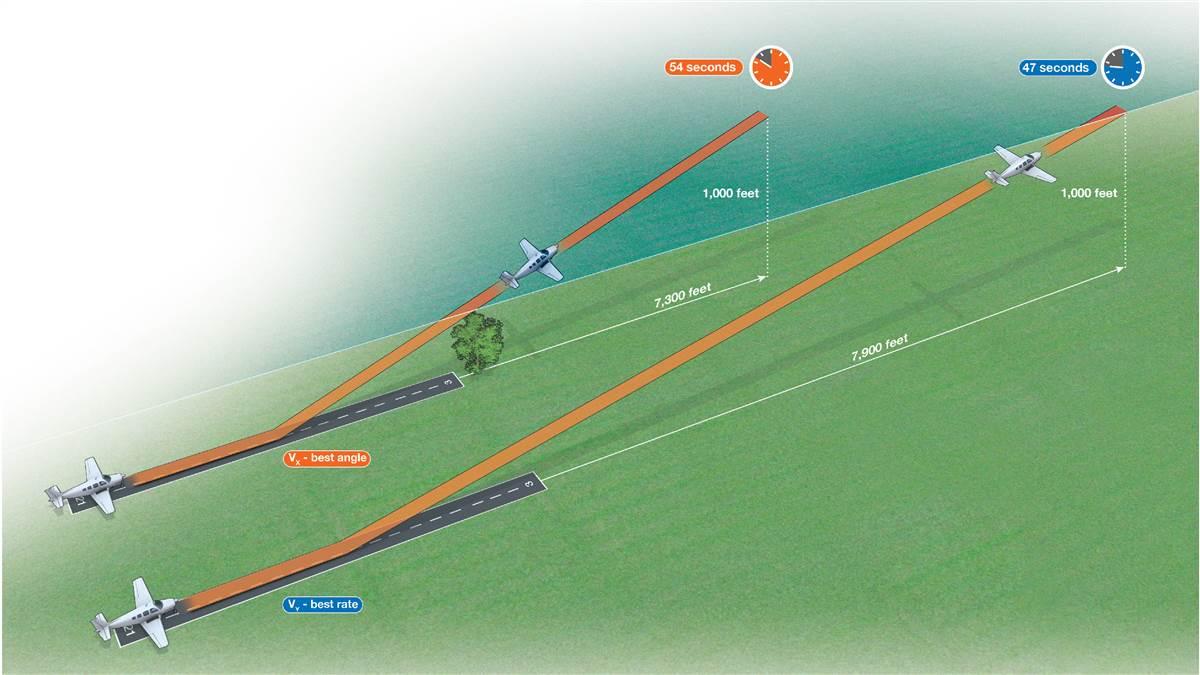
Pick a speed, any speed. Or, better yet, pick one of two.
Typically when we take off in an airplane we choose whether to climb at VY, the best rate of climb speed, or VX, the best angle of climb speed. You can probably recite the definitions, but understanding why we focus on those speeds will better help you choose one.
Forget about airplanes and flying for a second and put yourself in a car. You and a friend have made a bet. Before you are two hills that both peak at 1,000 feet, and yours is a little steeper, but the peak is closer. You look at the hill and bet that if you both floor the gas you’ll win a race to the top. But you’re wrong. Your friend wins easily. You check your odometers and he’s driven farther than you and still won the race. His hill required less power than yours, allowing him to drive to the top faster.
Your friend is VY and you are VX. He has gained the most altitude in the least amount of time, also known as the fastest rate. You have driven the same height, and in a shorter distance, but it took you longer to get there.
This is how you decide which speed to pick after takeoff. On a normal flight our goal is to get as high as possible as quickly as possible. This saves fuel, gets us into smoother air, and puts less strain on the engine. However, if there were a bunch of large trees at the end of the runway, time to cruise is the last thing we’d care about. Then your goal is to get the car to the top of the mountain in the shortest distance possible, or VX.



